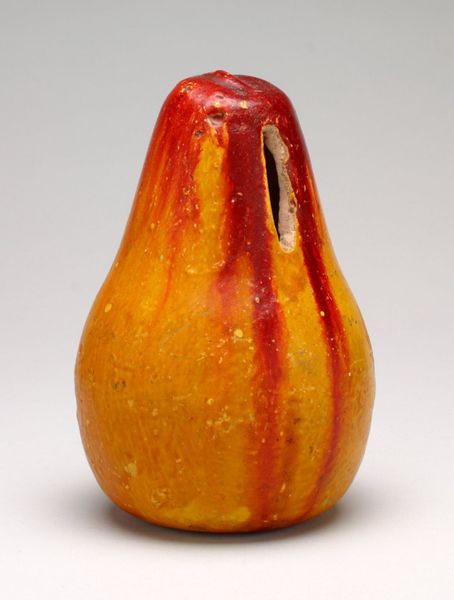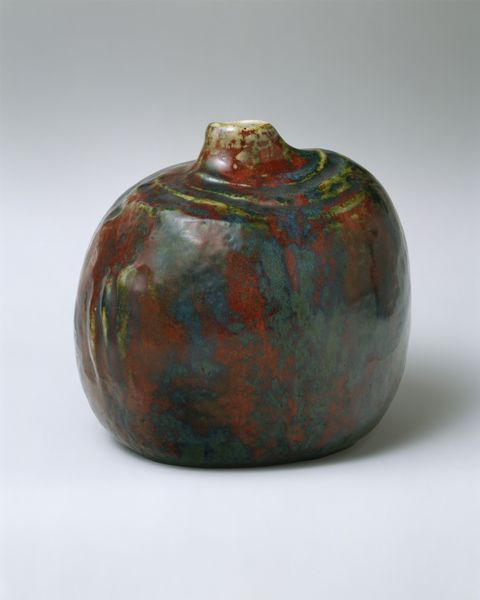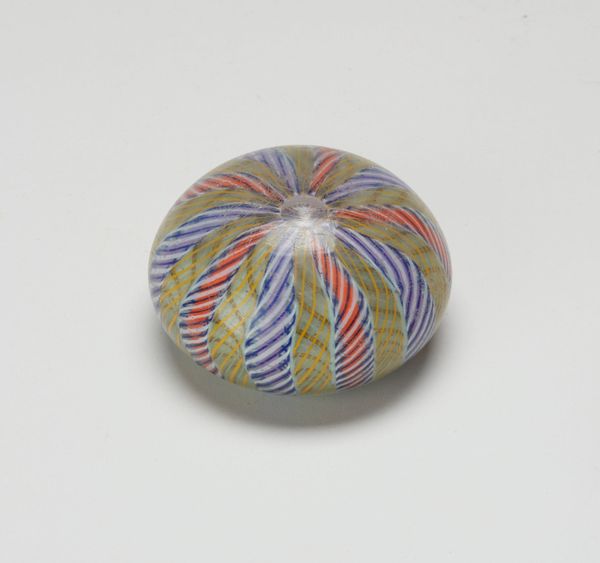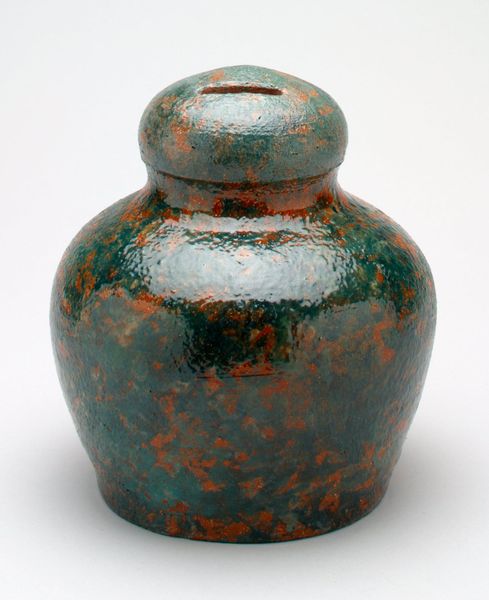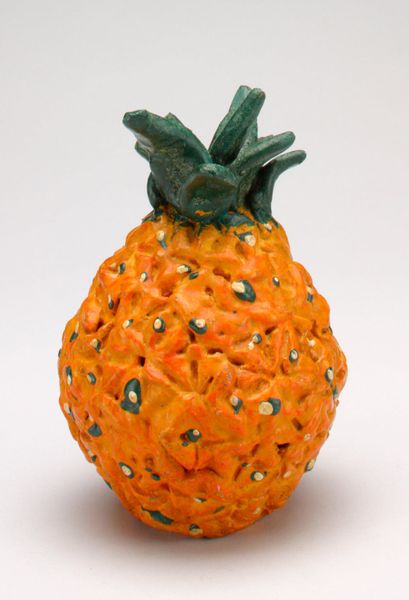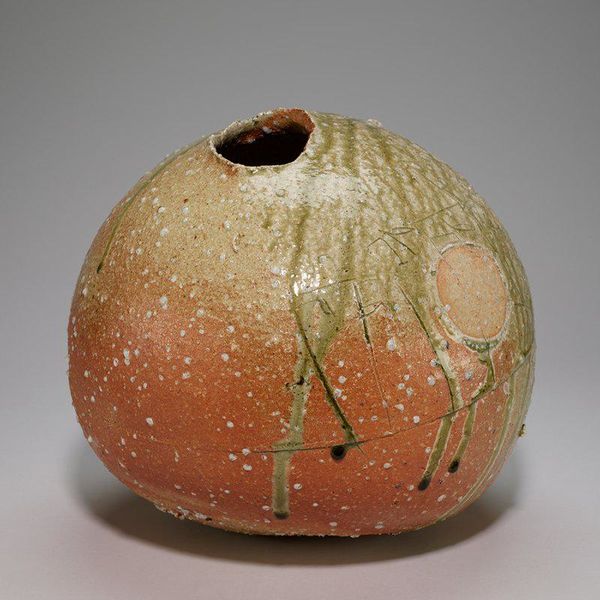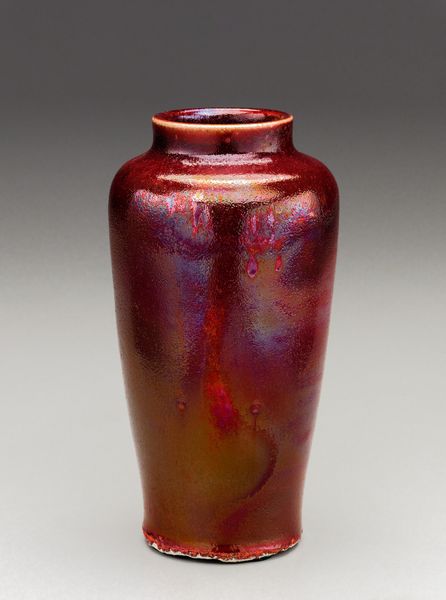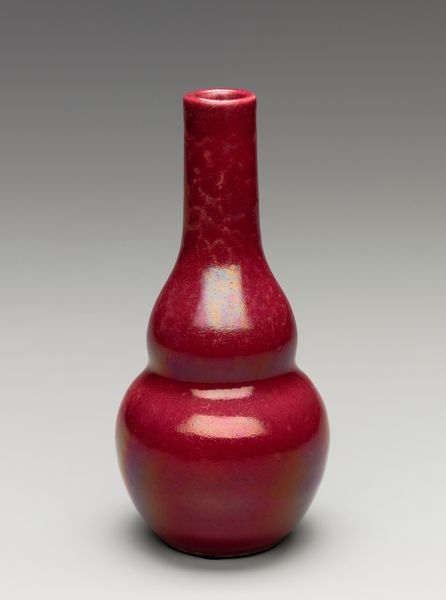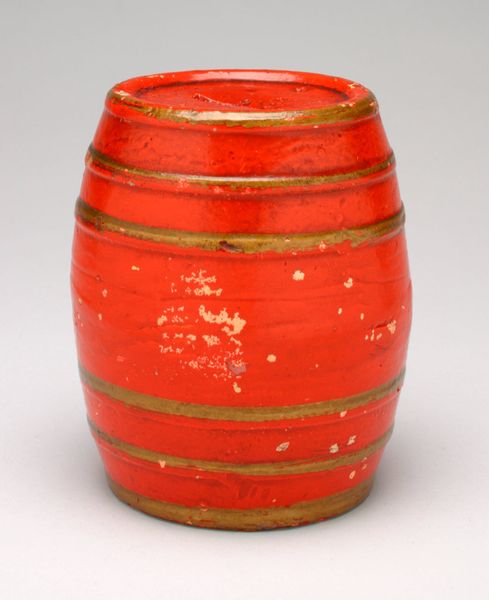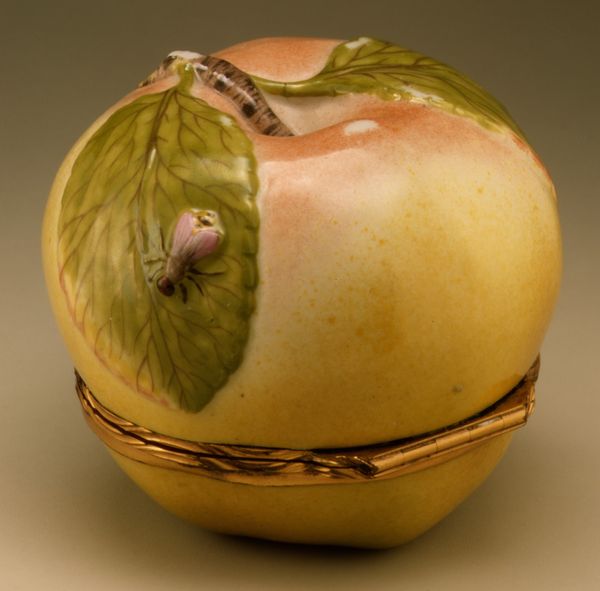
carving, sculpture, wood
#
carving
#
geometric
#
sculpture
#
wood
Dimensions: 3 1/4 x 3 5/8 x 3 5/8 in. (8.26 x 9.21 x 9.21 cm)
Copyright: Public Domain
Editor: This intriguing object is titled “Apple Still Bank,” and it dates back to the 19th century. Carved from wood, this apple is deceivingly geometric. What can you tell me about its social context? Curator: Well, looking at it through a historical lens, we see this simple, carved apple representing something far more significant than just fruit. During the 19th century, ideas of childhood innocence and the importance of saving money were on the rise, particularly in the growing middle class. Fruit, here an apple, represents temptation and access but, in its capacity as a bank, promotes values, such as self control and fiscal responsibility. Editor: That’s a compelling idea! The way social values influenced art, even something as functional as a bank, hadn’t occurred to me. Were there particular social groups or institutions championing these ideas? Curator: Absolutely. Think about the rise of Sunday schools and children’s literature during this period, they often promoted similar moral messages. Craft traditions are central to community. I suspect such practices were often driven or heavily supported by institutions like churches. So, the apple becomes not just a tool for saving, but a symbol of good character as defined by broader social structures. What I am still left pondering is what it means for the apple to represent money: does the apple represent greed, considering what occurred in the Garden of Eden? Editor: That’s a really good point; it makes the object morally ambiguous! Thanks to your perspective, I see it’s more than just a simple carving. Curator: Precisely! Hopefully, this perspective can teach others that the seemingly mundane often carries significant social and historical weight.
Comments
No comments
Be the first to comment and join the conversation on the ultimate creative platform.
